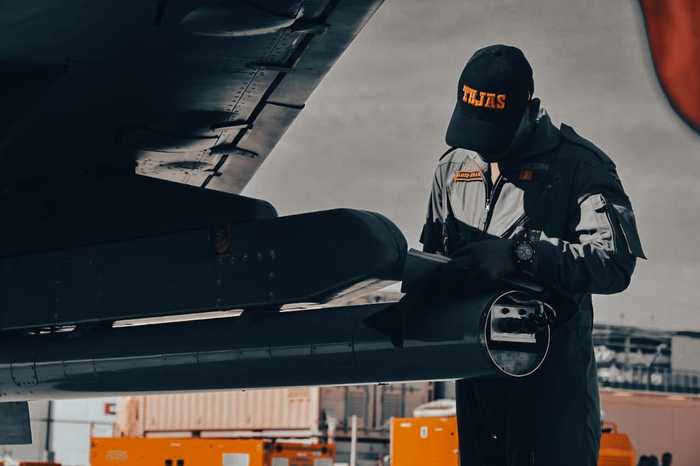Published 16:41 IST, March 14th 2024
How 10 years of PM Modi’s tenure propelled India's defence sector towards self-reliance
India's defence sector has witnessed a paradigm shift under PM Narendra Modi's tenure, marked by bold reforms and policy overhauls aimed at bolstering security.
- Defence
- 10 min read
New Delhi: Despite a rich tradition of manufacturing weapons, post-independence, India’s domestic defence industry faced stagnation, leading to increased dependence on imports for strategic needs. Corruption scandals further compounded the challenges, highlighting the urgent need for indigenous development and manufacturing capabilities, particularly in light of the evolving global security landscape. However, the nation’s defence industry has undergone rapid transformation since the onset of Prime Minister Narendra Modi’s tenure. The BJP is credited with laying down a comprehensive vision for indigenous defence manufacturing in its 2014 manifesto.
To achieve the goal of self-reliance in the defence sector, a series of bold decisions and policy reforms have been set in motion. Upon assuming power, the government embarked on a transformative path, emphasizing the development of domestic defence manufacturing capacity under the "Atmanirbhar Bharat" campaign. Reforms in the Defence Procurement Policy, such as the introduction of categories like "Buy Indian - Indigenously Designed, Developed and Manufactured" (IDDM) have been pivotal in prioritizing procurement from domestic sources. Additionally, the introduction of the Defence Acquisition Procedure (DAP) 2020 and the release of lists for indigenization have further bolstered the domestic defence manufacturing ecosystem. Some major developments in the defence sector under the tenure of the Bhartiya Janta Party have been-
The Chief of Defence Staff

Learning from past experiences, Prime Minister Narendra Modi surprised many during his second term by announcing the establishment of the post of Chief of Defence Staff (CDS), heralding the current military transformation. Gen. Bipin Rawat, appointed as the first CDS in December 2019, led top-down defence reform initiatives and was the first to head the newly created Department of Military Affairs. This move was hailed as "the most significant development in the national security domain since Independence."
In broad terms, this transformation consists of three main developments. First, the chief of defence staff led top-down defence reform initiatives. Second, PM Modi placed particular emphasis on building up India’s domestic defence industry. Third, the Indian military has taken on a central role in signalling its foreign policy priorities, reflecting a response to the rise of China and its newfound aggressiveness.
Military Diplomacy and Foreign Policy

Another significant element of transformation lies in military diplomacy, where the Indian military plays a central role in signalling foreign policy priorities. PM Modi's government has swiftly completed foundational agreements with the United States, enhancing U.S.-Indian military ties and engaging with like-minded partners, including Quad countries, in response to China's assertiveness. This shift has empowered the Indian military within India’s larger foreign policy framework, signalling a departure from past hesitancy.
Furthermore, the Indian government proved on September 28, that the nation’s armed forces would be used to pre-empt enemy attacks when Indian Special Forces were given the green light to carry out a surgical strike behind enemy lines. The strike, carried out in the aftermath of a dastardly attack on the Indian Army’s camp in Uri, significantly changed the image of the Indian armed forces world over. India proved the policy of zero tolerance on terrorism.
Propelling women's participation in the armed forces

Participation of women in the Indian Armed Forces has seldom been a hot topic for debate. On December 4, 2023, Prime Minister Narendra Modi announced that the government was committed to increasing the strength of women in the armed forces. “Today, India is setting bigger targets for itself and is utilising its full potential to achieve those targets,” the PM said on the occasion of Navy Day. Notably, as per the data accessed by Republic, as of January 1, 2023, nearly 1,733 women officers and 100 other ranks are currently serving in the Indian Army. Meanwhile, 1,733 women officers and 155 women agniveervayu are serving in the Indian Air Force and; 580 women officers and 726 women sailors are serving with the Indian Navy.
Furthermore, by granting Permanent Commission (PC) to Women Officers (WOs) in 12 Arms & Services, in addition to existing opportunities in the Army Medical Corps, Army Dental Corps, and Military Nursing Service, the Indian Army has taken a decisive step towards ensuring parity and a gender-neutral environment for all its personnel. The decision to open entry for women candidates in the National Defence Academy (NDA) further demonstrates the government’s commitment to providing equal opportunities for men and women in defence service. With women cadets now joining the NDA in batches, the organization is making proactive efforts to facilitate necessary administrative, training, and policy changes to accommodate this inclusive approach.
Decolonization of the Indian Armed Forces

The Indian Army's initiative to study ancient Sanskrit and Tamil texts from the 4th century BCE to the 8th century CE as part of its 'decolonising' efforts signifies a significant departure from conventional military doctrine. The aim is to rediscover India's rich heritage in statecraft, warcraft, diplomacy, and grand strategy, with the intention of operationalizing these insights in the contemporary regional nuclear weapons environment. This move reflects a broader trend towards reclaiming indigenous knowledge and traditions within the Indian military, aligning with the government's mandate for decolonization.
Similarly, the Indian Navy (IN) has taken steps towards cultural transformation by considering the incorporation of the kurta-pyjama attire into its formal dress code. Discussions at the recent biannual IN commanders' conference in New Delhi centred on this proposal, signalling a departure from traditional naval attire norms. Variations of the proposed dress, including a shorter kurta paired with a waistcoat and drainpipe pyjama, were showcased for approval by Minister of State for Defence Ajay Bhatt. This was viewed as a progressive step towards embracing indigenous cultural elements within the armed forces. The potential inclusion of the kurta-pyjama in the IN's formal couture signifies a broader shift towards inclusivity and cultural diversity within the military establishment. It reflects a departure from colonial-era practices and a recognition of India's rich sartorial heritage.
Theaterisation of the Indian Armed Forces

Recently, the Indian Army organised Exercise Bharat Shakti, a tri-services fire and manoeuvre exercise at the Pokhran Field Firing Range, Rajasthan. Held on March 12, 2024, the synergised demonstration of India’s defence capabilities during the exercise at Pokaran was a testimony to the government’s commitment towards modernisation of the Indian Armed Forces through indigenisation. Exercise Bharat Shakti simulated realistic, synergised, multi-domain operations carried out by all three services, which displayed integrated operational capabilities to counter threats across land, air, sea, cyber, and space domains. Notably, the government led by Prime Minister Narendra Modi is pushing to achieve the goal of theaterisation. The idea revolves around the integration of the army, air force, and navy under a single unified command structure for a specific geographical area. Exercise Bharat Shakti not only displayed the indigenous defence capability of the Armed Forces but also displayed the integration and jointness that is being achieved in various aspects like communications, training, inter-operability and logistics.
Enhancing India’s Missile Warfare Capabilities

Amid the constantly shifting geopolitical relations and emerging flashpoints all over the world, the Indian government significantly shifted its focus to improve the air defence as well as offence capabilities of the armed forces. Notably, the nation recently successfully carried out the test of the Agni-5 intercontinental ballistic missile with Multiple Independently Targetable Re-entry Vehicle (MIRV) technology. The test carried out by the Defence Research and Development Organisation (DRDO) under Mission Divyastra validated the nation’s prowess in defence capabilities.
Furthermore, the Ministry of Defence has taken a significant step towards enhancing India's defence capabilities by signing a contract with Bharat Dynamics Limited (BDL) for the procurement of the improved Akash Weapon System (AWS) for the Indian Army. This contract, valued at over Rs 8,160 crore, underscores the government's commitment to strengthening the country's air defence capabilities. The procurement of the improved AWS includes provisions for the 3rd and 4th Regiments of the Army Air Defence, comprising live Missiles & Launchers with upgrades, Ground Support Equipment, Vehicles, and Infrastructure. This comprehensive approach ensures that the Indian Army is equipped with state-of-the-art technology and resources to effectively counter emerging threats.
One of the notable features of this project is its high indigenous content, with an initial level of 82% expected to increase to 93% by 2026-27. This highlights India's efforts towards self-reliance in defence manufacturing and reduces dependency on foreign suppliers.
Emphasis on Indigenous Defence Industry

The BJP administration prioritized building India’s domestic defence industry under the "self-reliant India" (Aatmanirbhar Bharat) initiative. Past governments grappled with India's status as the world’s largest arms importer. However, the Modi government's policies, despite facing opposition from labour unions, fostered collaboration between state-owned and private-sector defence enterprises, driving a paradigm shift in the sector's mindset towards cooperation and export focus.
Recognizing the precariousness of the situation, Prime Minister Narendra Modi and the Bharatiya Janata Party (BJP) laid down a comprehensive vision for indigenous defence manufacturing in its 2014 manifesto. The cornerstone of this vision was the "Make in India" initiative. This initiative has been instrumental in encouraging domestic production and fostering innovation within the defence sector.
Budget allocation and infrastructure development

To achieve this goal, a series of bold decisions and policy reforms have been set in motion. One of the key areas of focus has been the increase in the defence budget and its effective utilization in developing the domestic defence manufacturing ecosystem. In FY 2023-24, a record 75% of the defence capital procurement budget, approximately Rs. 1 lakh crore was allocated to the domestic industry, up from 68% in the previous fiscal year.
Additionally, Prime Minister Narendra Modi inaugurated the Hindustan Aeronautics Limited (HAL) Helicopter Factory in Tumakuru, Karnataka, which is the largest helicopter manufacturing facility in India. Moreover, the foundation stone for the manufacturing facility of 40 C-295 transport aircraft was laid by the Prime Minister in Vadodara, Gujarat, in October 2022. The first Made in India C-295 aircraft is expected to roll out of the Vadodara FAL in September 2026 in what will be a milestone for the Indian aerospace industry.
OROP implementation and OFB modernisation
Taking another critical decision, the Modi government implemented the long-pending One Rank One Pension (OROP) scheme, benefiting 20.6 lakh pensioners or their family members. With an annual expenditure of Rs. 7,123 crore, this scheme has provided much-needed financial support to veterans. The Sparsh scheme complements OROP, ensuring direct disbursement of funds to pensioners' bank accounts, eliminating intermediaries and streamlining the distribution process. In 2021-22 alone, over 5 lakh pensioners received Rs. 11,600 crores through the Sparsh platform, enhancing transparency and efficiency in pension disbursement.
Furthermore, seven new defence companies were recently dedicated to the nation, marking a crucial step in the modernisation of the Ordnance Factory Board (OFB). This decision underscores the government's commitment to transforming OFB from a department into seven corporations wholly owned by the government. Furthermore, twenty-five per cent of the R&D budget for defence has been allocated to industry professionals, startups, and research initiatives, promoting innovation and technological advancement within the sector.
The IDEX scheme and boost in defence exports
India has witnessed a remarkable 334 per cent increase in the export of defence materials since 2014-15, reaching Rs. 8,434 crores in 2020-21. This significant growth underscores the rising global demand for Indian defence goods, with exports now spanning 84 countries. Unique competitions like the Defence Innovation Startup Challenge have been instrumental in facilitating collaboration between the armed forces and innovative startups, ensuring the delivery of cutting-edge products to meet strategic requirements.
Moreover, private sector participation has been encouraged through initiatives like "Innovations for Defence Excellence" (iDEX), aimed at fostering indigenous innovation and technology development. In tandem with these efforts, foreign direct investment (FDI) policies in the defence sector have been liberalized to encourage foreign original equipment manufacturers to invest, manufacture, and export from India.
Updated 18:39 IST, March 14th 2024